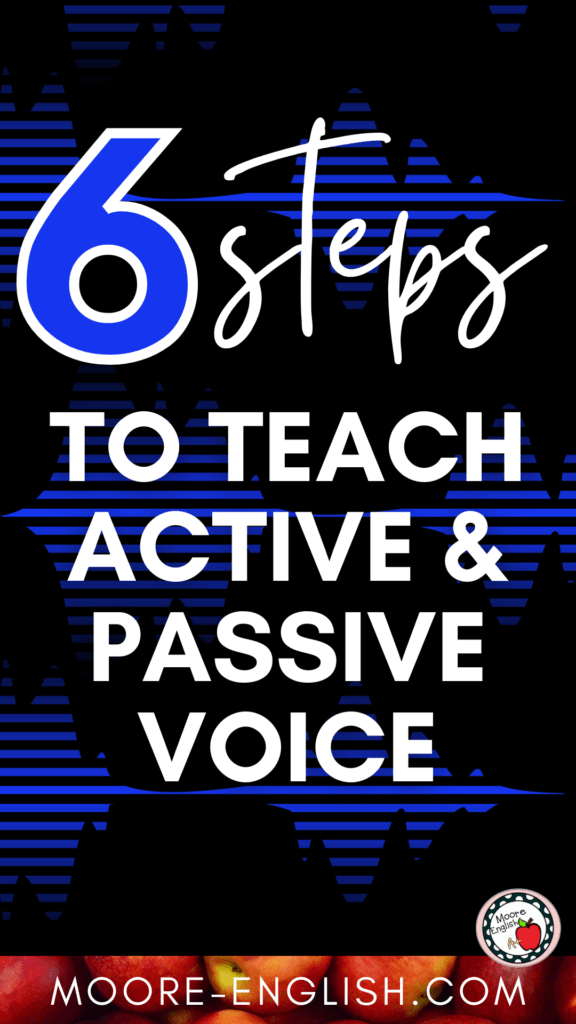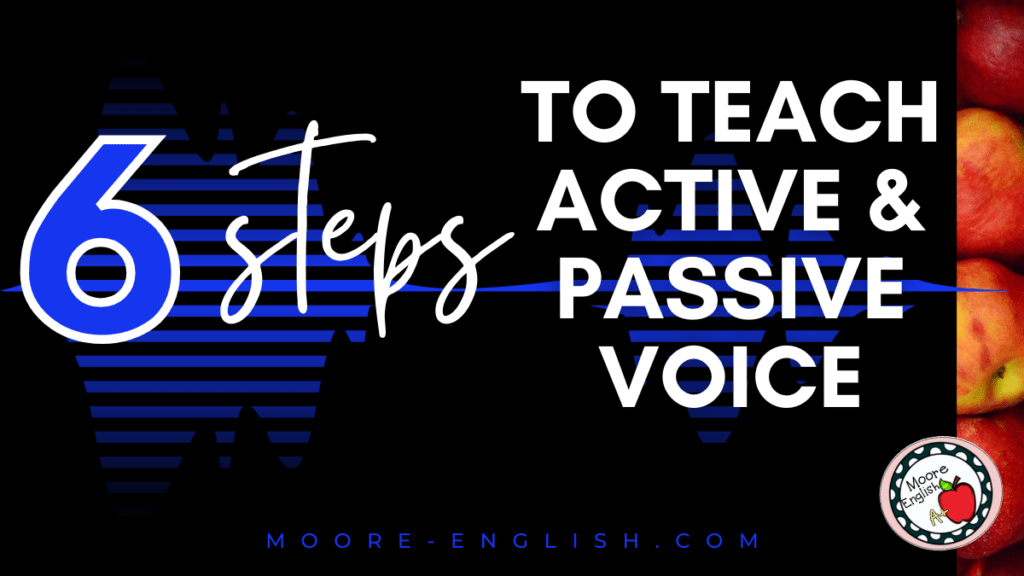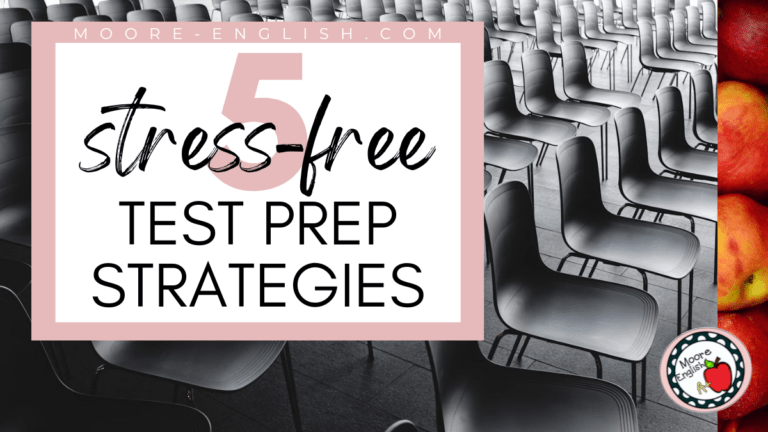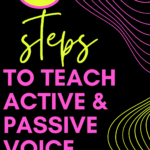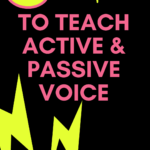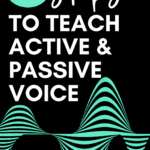Let me confess: as a teenager, I wrote a lot of fan fiction. Plugging away at a ridiculous Microsoft Word document, I would often get squiggly lines for spelling and grammar errors. In particular, I would get notes about “passive voice.” At the time, I had never heard of it, so I just clicked “ignore” and moved on. (If you were wondering, I wrote Draco/Hermione everything.)
No one explained active and passive voice to me until college. And even then our professor was berating us for always using the passive voice. In class, we just slid down in our seats and tried not to make eye contact. After class, we were all exchanging puzzled glances.
As a young teacher, I noticed my students had a problem with wordy writing. Sometimes the sentences meandered, but other times they confused readers because the subject was at the end. That’s when I knew that I had to teach active and passive voice.
The first few times I taught active and passive voice, it went poorly. We all ended up more confused than when we started. In high school, no one taught me about active and passive voice, and as a teacher, no one had showed me how to teach it either!
Now, after more than 10 years, I have a system for teaching active and passive voice. It’s a system I believe in, swear by, and am proud to share with you!
This post this post may contain affiliate links. Please read the Terms of Use.
Start with the Basics
First, provide students with a very passive sentence.
Example: The store was overwhelmed by capybaras with scratchy fur being shed across the floor.
I like this example because it is doubly passive. First, “capybaras” appears after the subject and, second, readers don’t know who or what is shedding. Also, it gives me an excuse to choose a cute picture for the board.
Once you have your example, ask students what’s wrong with the sentence. Don’t complicate things by also trying to make a point about punctuation or capitalization.
Some classes will quickly realize the sentence is wordy. Other classes may need prompting.
Either way, ask students to help you label the sentence’s subject, verb, and object. Don’t get caught up in prepositional phrases. Students will see that the subject “capybaras” appears in the wrong spot, and “shed” lacks a subject.
I always start here because while there are many signs of passive voice, every single passive sentence has a missing or misplaced subject.
Practice Again and Again
Once students understand that the difference between an active and a passive sentence, practice.
First, I use this card sort to challenge students to identify active and passive sentences.
Then, I assign each partnership a passive sentence from the deck and ask them to make corrections.
Next, each group shares and explains their corrections.
Then, we repeat the entire cycle!
Identify Additional Signs of Passive Voice
As students become more comfortable with active and passive voice, I ask students to identify similarities among passive sentences. Usually, students can identify that passive sentences are oftentimes wordy.
Then, when students get stuck, I will choose 2-3 passive sentences that all contain a “to be” verb and a preposition like “by” or “of.” Students and I will label the parts of the sentence until they recognize these similarities.
At this point, students will be able to identify 4 signs of passive voice:
- A missing or misplaced subject
- A misused preposition
- A “to be” verb
- Wordiness
Not every passive sentence will have all 4 signs of passive voice. However, being able to identify these signs or “symptoms” gives students more tools in their arsenal.
Practice Active and Passive Voice in Context
Grammar instruction is only meaningful if students understand how and why they should apply it to their work. For this reason, I will ask students to find a paragraph from their most-recent writing.
Then, I will ask students to highlight every verb in one color. Students will have a partner check their work.
From there, students will then match each verb to a subject. Very rarely do I have a student who can match every single subject and verb. It’s even more rare to find a student who has an active verb for every subject.
Again, students will check their work with a peer. Oftentimes, this will be the end of the first part of the lesson, and I will collect student highlights as an exit ticket before we move on to the next part of the lesson.
The next day, I will return student writing (either digitally through an extension like Kami or on paper). Sometimes I scramble student responses so they are working with an anonymous peer’s writing. Students then work to improve passive sentences and make them active.
Around this time, a student or two will wonder why passive voice is bad. For this reason, I clarify that passive voice is weak. When you want to hide your role in breaking the window, saying “The window was broken” is a good way to skirt responsibility. When you want to write a narrative about learning an important lesson, “I broke the window in a fit of anger, which rushed through my veins…”
Save the Zombies for the End
There is a popular teach hack that teaches students to identify passive voice by placing the phrase “by zombies” after the verb. This is a great hack and oftentimes helps students quickly identify passive voice.
However, I always save this hack for the end of our study of active and passive voice. Over the years, I have learned that students can become reliant on this strategy, which can lead them to a limited understanding of active and passive voice.

